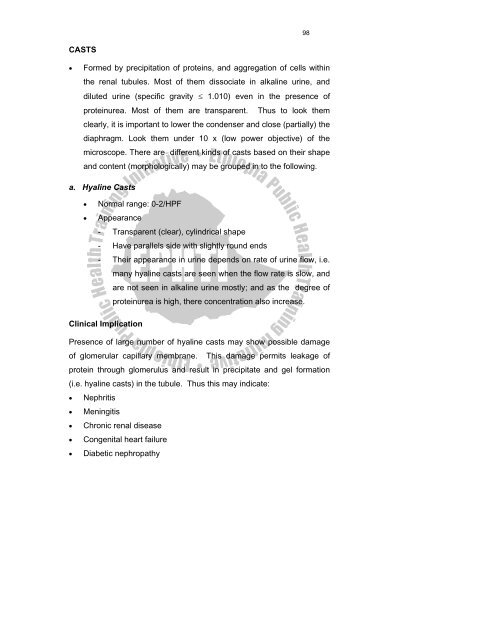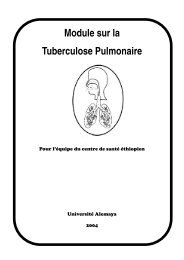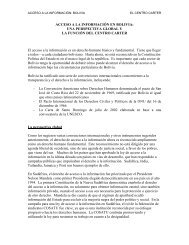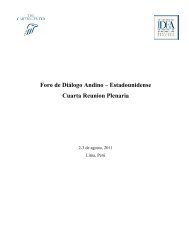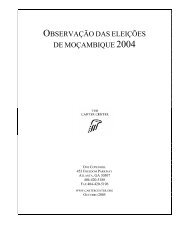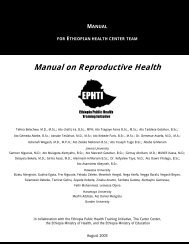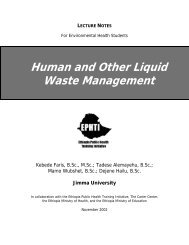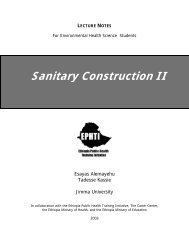Urinalysis - The Carter Center
Urinalysis - The Carter Center
Urinalysis - The Carter Center
You also want an ePaper? Increase the reach of your titles
YUMPU automatically turns print PDFs into web optimized ePapers that Google loves.
98<br />
CASTS<br />
• Formed by precipitation of proteins, and aggregation of cells within<br />
the renal tubules. Most of them dissociate in alkaline urine, and<br />
diluted urine (specific gravity ≤ 1.010) even in the presence of<br />
proteinurea. Most of them are transparent. Thus to look them<br />
clearly, it is important to lower the condenser and close (partially) the<br />
diaphragm. Look them under 10 x (low power objective) of the<br />
microscope. <strong>The</strong>re are different kinds of casts based on their shape<br />
and content (morphologically) may be grouped in to the following.<br />
a. Hyaline Casts<br />
• Normal range: 0-2/HPF<br />
• Appearance<br />
- Transparent (clear), cylindrical shape<br />
- Have parallels side with slightly round ends<br />
- <strong>The</strong>ir appearance in urine depends on rate of urine flow, i.e.<br />
many hyaline casts are seen when the flow rate is slow, and<br />
are not seen in alkaline urine mostly; and as the degree of<br />
proteinurea is high, there concentration also increase.<br />
Clinical Implication<br />
Presence of large number of hyaline casts may show possible damage<br />
of glomerular capillary membrane. This damage permits leakage of<br />
protein through glomerulus and result in precipitate and gel formation<br />
(i.e. hyaline casts) in the tubule. Thus this may indicate:<br />
• Nephritis<br />
• Meningitis<br />
• Chronic renal disease<br />
• Congenital heart failure<br />
• Diabetic nephropathy


